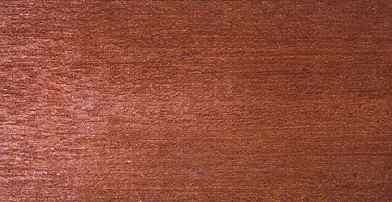
Apitong (Dipterocarpus warburgii)
Family: Dipterocarpaceae
Common names: Angu, Apitong, Bebe, Borneo keruing, Dau, Eng, Hagakhak, Heng, Huevos de gato, In, Keruing, Lagan, Lagunero, Mututi, Nogal falso, Palo de pollo, Pau sangua, Sangre, Sangre de drago, Sangrillo, Yang, Yaya sangre
Distributed in: Philippines (Oceania and S.E. Asia)
Distribution overview: Widely distributed in the Philipiines where the dry season is mild, as well as in Borneo. It occurs in forested regions, in flood plains of large and small streams, and also on low hills, up to 1000 feet (305 m) in elevation.
Common uses: Beams, Boat building, Building construction, Cabin construction, Canoes, Concrete formwork, Construction, Core Stock, Crossties, Decks, Decorative plywood, Decorative veneer, Domestic flooring, Factory construction, Factory flooring, Figured veneer, Flooring, Form work, Foundation posts, Framing, Heavy construction, Joists, Lifeboats, Light construction, Pallets, Parquet flooring, Plain veneer, Plywood, Porch columns, Railroad ties, Rough construction, Shipbuilding, Structural plywood, Sub-flooring, Utility plywood, Veneer
Product sources: The wood of all species in the genus is almost identical in structure. Differences in weight, hardness, and color are no greater than those found within individuals of the same species growing in different areas. They are usually mixed and marketed together under the trade name of Apitong (from the Philippines) or Keruing (from Malaysia). Timber produced from Malaysia species are the most variable in properties.Some non-timber products include a somewhat viscous, liquid oleo-resin which is produced by some species in the genus. The resin is known as Minyak keruing in Malaysia and is used locally for caulking boats and for medicinal purposes. Pieces of rotten wood, well soaked in the resin are used as fire-lighters or torches.
Environment profile: Status unknown due to inadequate information
Tree size: Trunk diameter is 150-200 cm
Colors: the heart isReddish brown, Yellowand the sapwoodWide, Yellow.The grain isStraight to shallowly interlocked, the textureUniformand the lusterNon-lustrous
Natural durability: Susceptible to attack by marine borers, Susceptible to termite attack
Odor: Strong resinous smell associated with freshly cut wood
Kiln Schedules: T3 - D2 (4/4); T3 - D1 (8/4) US
Drying Defects: Drying at high temperatures may cause resin exudation, Warping can be expected
Ease of Drying: Thick Stock Requires Care
Comments: Resin and Silica ContentThe timbers contain resin which tends to seep on to surfaces of material dried at high temperatures. Dipterocarpus timbers also contain varying levels of silica, generally less than 0.5% of ovendry weight. Silica levels above 0.05% are generally believed to affect some wood properties
Blunting Effect: Moderate
Boring: Fairly easy to very easy
Carving: Fairly Easy to Very Easy
Cutting Resistance: Saw teeth blunted rapidly and severely by some stock
Gluing: Fairly difficult to glue
Mortising: Fairly Easy to Very Easy
Moulding: Fairly Easy to Very Easy
Movement in Service: Fairly Easy to Very Easy
Nailing: Satisfactory nailing properties, Very Good to Excellent
Planing: Straight grained and easy to work in most machining operations
Resistance to Impregnation: Sapwood is moderately resistant
Response to hand tools: Responds Readily
Routing recessing: Fairly Easy to Very Easy
Sanding: Good sanding properties
Steam bending: Steaming accompanied by severe resin exudation
Screwing: Fairly Easy to Very Easy, Very Good to Excellent Results; Turning: Good turning and woodworking, especially when green
Polishing: Resin exudation impacts polishing/finishing; Staining: Fairly Easy to Very Easy;
- Numerical data Metric
- Numerical data English
- Strength properties
- References
 |
 |
 |
 |
| Item |
Green |
Dry |
Metric |
| Specific Gravity |
0,48 |
0,53 |
|
| Density |
|
737 |
kg/m3 |
| Bending Strength |
592 |
987 |
kg/cm2 |
| Crushing Strength |
36 |
54 |
kg/cm2 |
| Hardness |
|
351 |
kg |
| Impact Strength |
|
|
cm |
| Shearing Strength |
|
94 |
kg/cm2 |
| Stiffness |
117 |
145 |
1000 kg/cm2 |
| Tangential Shrinkage |
|
|
% |
| Radial Shrinkage |
|
|
% |
| Weight |
|
|
kg/m3 |
| Maximum Load |
|
|
cm-kg/cm3 |
| Toughness |
|
330 |
cm-kg |
| Static Bending |
369 |
655 |
kg/cm2 |
|
 |  |  |  | | Item | Green | Dry | English | | Bending Strength | 8426 | 14050 | psi | | Crushing Strength | 515 | 782 | psi | | Density | | 46 | lbs/ft3 | | Hardness | | 775 | lbs | | Maximum Crushing Strength | 4224 | 7436 | psi | | Shearing Strength | | 1346 | psi | | Static Bending | 5255 | 9325 | psi | | Stiffness | 1673 | 2070 | 1000 psi | | Toughness | | 287 | inch-lbs | | Specific Gravity | 0.48 | 0.53 | | | Weight | 45 | 37. | lbs/ft3 | |
Chudnoff, M.,1984,Tropical Timbers of the World,U.S.A. Department of Agriculture, Forest Service, Forest Products,Laboratory, Madison.HMSO.1972.Handbook of Hardwoods, 2nd Edition.Revised by R.H. Farmer.Department of the Environment, Building Research Establishment, Princes Risborough Laboratory, Her Majesty's Stationery Office, London.Keating, W.G., Bolza, E.,1982,Characteristics properties and uses of timbers. South East Asia, Northern,Australia and the Pacific,C.S.I.R.O. Div. Chemical Technology,Inkata Press,1Lauricio, F. M., Bellosillo, S. B., The Mechanical and Related Properties of Philippine Woods, The Philippine Lumber Journal, 12(5):A-H.Tamesis, F. and L. Aquilar. 1953.The Philippine Mahogany and Other Dipterocarp Woods.Popular Bulletin No. 44. Department of Agriculture and Natural Resources, Republic of the Philippines, Manila.
|








